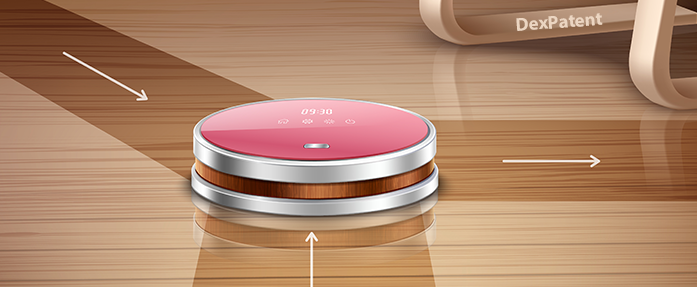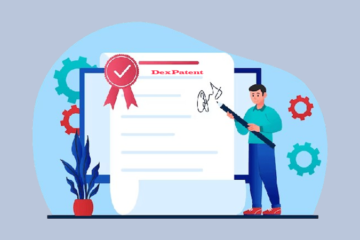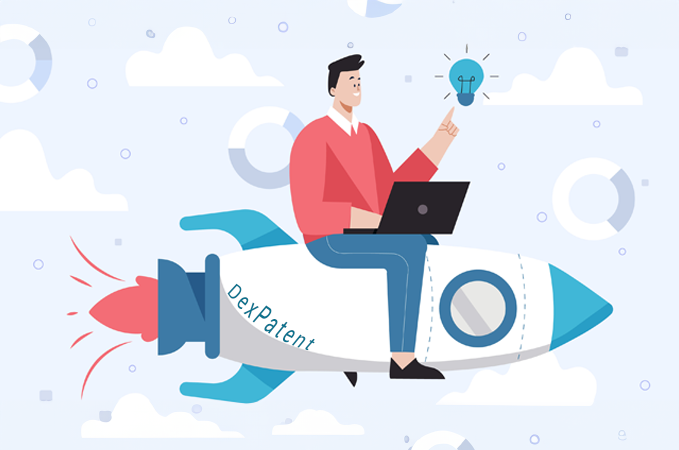Patent and Prosper

“Innovation distinguishes between a leader and a follower” – Steve Jobs
The Secret to Making Millions
Have you ever had a groundbreaking idea and wondered how you could turn it into a profitable business venture? Patents can be the key to turning your innovative ideas into financial success. Many successful entrepreneurs have used patents to protect their inventions and to create wealth, but the question remains: can patents make me rich and famous?
The answer is a resounding yes.
Patents certainly can provide a competitive advantage in the marketplace, as they allow inventors to exclude others from using or selling their inventions in a given geography, for a defined period which is usually 20 years.
This can help inventors secure licensing agreements, attract investors, and negotiate better deals with manufacturers and distributors. Additionally, patents can enhance an inventor’s reputation and credibility, as they demonstrate a high level of expertise and technological advancement.
From Thomas Alva Edison’s light bulb to Steve Jobs’ iPhone, patents have played a crucial role in shaping our world and have helped inventors achieve worldwide recognition. However, the road to success is not always smooth and the challenges of bringing a new invention to market can be daunting. Despite this, there are countless examples of inventors who have used patents to their advantage and achieved great success.
Let us see some of the most notable inventors and entrepreneurs who have leveraged patents to transform their ideas into commercial successes.
Thomas Alva Edison: Edison was one of the most prolific inventors of his time and held over 1,000 patents. As a result of his groundbreaking inventions, including the electric light bulb and the phonograph, he achieved widespread recognition and became widely known throughout various industries and communities.
Alexander Graham Bell: Bell’s invention of the telephone was a game-changer in communication technology and led to the founding of the Bell Telephone Company, which later became AT&T.
James Dyson: Dyson’s invention of the bagless vacuum cleaner revolutionized the industry and made him a billionaire.
Steve Jobs: The patents that Jobs secured for Apple’s iconic products like the iPhone and iPad played a vital role in the company’s success and propelled Jobs to fame, with his name becoming synonymous with innovation and technological advancement.
If you’re an inventor or entrepreneur, you’ve probably heard that patents can be a powerful tool for protecting your ideas and turning them into profitable businesses. But what does it really take to create a patented invention that changes an industry and leads to fame and fortune?
One prime example is the story of James Dyson and his revolutionary vacuum cleaner design. Dyson’s patented cyclonic separation technology transformed the vacuum cleaner industry, offering a unique and effective solution to a common problem. The success of the Dyson brand shows how a patented invention can lead to a profitable and successful business.
Inventor James Dyson spent years perfecting his revolutionary vacuum cleaner design, and the technology behind is what sets it apart from traditional vacuum cleaners.

The key innovation behind Dyson’s design is the use of cyclonic separation to capture dust and other particles. In traditional vacuum cleaners, air is sucked through a bag or filter to capture dust and debris, but this can cause clogging and loss of suction over time.
Dyson’s vacuum cleaner, on the other hand, uses cyclonic separation to spin the air and separate dust and debris from the air using centrifugal force. This eliminates the need for a bag or filter and maintains strong suction over time.
The patented technology behind the Dyson vacuum cleaner has allowed the company to become a market leader in the industry, with the product selling in over 65 countries worldwide. The company has also expanded to include other products, such as hair dryers and air purifiers, all of which incorporate the same cyclonic separation technology.
The success of the Dyson brand is a prime example of how a patented innovation can lead to a profitable and successful business. The technology behind the Dyson vacuum cleaner not only solved a common problem with traditional vacuum cleaners but also offered a unique and effective solution that customers were willing to pay a premium for.
Patents can be a valuable tool in protecting your invention from being copied or stolen. However, it is important to understand that obtaining a patent is just one step in the process of bringing your invention to market. Several other factors can impact the success of your invention, including market demand, competition, cost, licensing, and timing. By carefully considering these factors and developing a comprehensive business strategy, you can improve your chances of achieving success with your patented invention.
Market demand: Before investing time and resources into obtaining a patent, it’s important to research and determine if there is a market demand for your invention. This means understanding if there are potential customers who would be interested in purchasing your product or using your technology. Conducting market research and analyzing industry trends can help you determine if there is a demand for your invention.
Anything That Won’t Sell, I Don’t Want To Invent.
Its Sale Is Proof Of Utility,
And Utility Is Success
Thomas A Edison
Competition: A patent can provide legal protection for your invention. However, if there are already established players in the market offering similar products or technologies, it can be difficult to compete and capture market share. It’s important to understand your competition and how your invention compares to their offerings.
Licensing: If you do not have the resources to manufacture and sell your invention on your own, licensing your patent to a third party can be a viable option. This means allowing another company to use your patented technology in exchange for royalties or other compensation. Licensing can be a profitable option if you negotiate favorable terms, but it’s important to carefully review any agreements before entering into them.
What is a Patent and why should you care?
A patent is a form of intellectual property that is granted by a government to inventor(s), giving the inventor(s) the right to exclude others from making, using, selling and importing an invention for a limited period of years within a particular territory, in exchange for disclosing and making the invention known to the world for further improvements.
If you have a new and innovative idea or invention, it is important to consider obtaining a patent to protect your invention. Here are some reasons why you should consider patenting your invention or idea:
Protection against infringement: A patent gives you legal protection against others who may try to steal or copy your invention intentionally or unintentionally. With a patent, you have the exclusive right to prevent others from making, using, or selling your invention without your permission. This can help prevent others from profiting from your hard work and innovation.
Increased marketability: A patent can increase the marketability of your invention by making it more attractive to investors, potential partners, and customers. A patent can demonstrate to others that your invention is unique, innovative, and worth investing in.
Competitive advantage: A patent can give you a competitive advantage over others in your industry by preventing them from making similar products. This can help you maintain market share and increase profitability.
Licensing opportunities: A patent can open up licensing opportunities for your invention. You can license your patent to others who may be interested in using your invention or incorporating it into their products. This can generate additional revenue for you and help you reach a broader market.
Asset value: A patent is a valuable asset that can be sold or licensed like any other physical asset. If your invention is successful, your patent could be worth millions of dollars.
Innovation and progress: By patenting your invention, you are contributing to innovation and progress in your industry. Your invention may inspire others to develop new ideas and products that can benefit society.
In conclusion, patenting your invention or idea can provide significant benefits, including legal protection, increased marketability, competitive advantage, licensing opportunities, asset value, and contribution to innovation and progress.
The Cost of Not Patenting Your Idea
Let’s say RedEner Inc (an imaginary company) has developed a new and innovative product that helps reduce energy consumption in households. The product is a huge success and RedEner Inc becomes the go-to company for energy-efficient products.
However, RedEner Inc did not apply for a patent for their invention. A competitor, company GreenEner Inc, notices the success of RedEner Inc’s product and decides to replicate it, without infringing on any patents, and starts selling their own version of the energy-saving product at a lower price.
As a result, RedEner’s sales start to decline as customers are attracted to the cheaper option from GreenEner. Additionally, RedEner Inc is unable to generate any revenue through licensing or selling their invention to other companies since they don’t have any patent rights.
Worse still, GreenEner decides to apply for a patent on the modification of the energy-saving product, effectively preventing RedEner from doing the same. Now, even though RedEner was the first to come up with the idea and create a successful product, they are unable to benefit from it due to not having taken the necessary steps to protect their invention.
This example highlights the importance of patent protection for innovative products and technologies. Without a patent, a company is vulnerable to competitors who can easily replicate their products and gain market share, ultimately causing a decline in sales and revenue. Additionally, a lack of patent protection can limit a company’s ability to generate revenue through licensing or selling their invention to other companies.
This scenario underscores the need for companies to consider patent protection early on in the product development process to ensure that they can fully benefit from their innovative ideas and hard work.
In today’s fast-paced world of innovation and technology, protecting your intellectual property is crucial. Patents play a vital role in safeguarding your inventions and providing legal protection against infringement by competitors. However, many inventors overlook the importance of filing a patent, which can lead to various consequences.
Loss of intellectual property rights: Deciding not to seek a patent could result in losing your rights to intellectual property. Anyone can use your invention without your consent or pay any royalty to you. Therefore, your competitors can take advantage of your invention and create similar products, which could lead to unfair competition and reduced profitability for your company.
Missed opportunities for licensing and sales: Not having a patent can also limit your opportunities for licensing or selling your invention to others. If you have a patent, you can grant licenses to others to use your invention and earn a royalty. Additionally, you can sell your patent to others for a substantial sum of money. Without a patent, you cannot license or sell your invention, which could limit your earning potential.
Risk of infringement lawsuits: If you don’t have a patent, you may be at risk of infringement lawsuits by others. Competitors can file patents on similar inventions, and you may unknowingly infringe on their patents, which could lead to costly lawsuits and legal fees.
By obtaining patent protection, you can protect your inventions, generate revenue streams, and maintain your competitive advantage in the market.
The Benefits of Having a Patent

With patent rights, the patent holder (patentee) can
(a) prevent others from making, using or selling the patented invention without patentee’s permission. In case of misuse of your patent, you can claim monetary damages or accounts of profits as compensation or remedy from third party (infringer) via patent infringement lawsuits in local or federal courts.
(b) assign whole or part of the patent rights to the assignee who acquires the right to make, use, or sell the invention for revenue. This can also be assigned during the patent application filing. Assigning means transferring the ownership right of the patent
(c) grant a license by the way of an agreement. and permit a licensee to make, use, or exercise the invention. A license is a contract signed by the licensor and the licensee, in writing and the terms agreed upon by them including the payment of royalties.
Types of Patents: Which One is Right for You?
There are three types of patents – utility patents, design patents, and plant patents. Each type of patent protects a specific type of invention and has its own eligibility requirements.
Utility patent: A utility patent is the most common type of patent, granted for the functional aspect of the invention. The utility patent can be obtained for a new process, device, machine, composition of matter and/or article of manufacture or any useful improvement of an existing art. The utility patent is valid for 20 years from the filing date of application.
- Process refers to any action or method performed for achieving a particular use, usually involves industrial or technical process
- Machines refers to particular device or system which perform functional operation such as computer, purifier
- Compositions of matter are basically chemical compounds and/or compositions including a mixture of ingredients. Example: pharmaceutical products, agricultural products, herbal products
- Article of Manufacture refers to articles or goods produced or made
Design Patent: A design patent is granted for a new creation of external or ornamental shape or appearance of an article. The design patent is valid for 10 years from the filing date of application. Some examples of ornamental designs are jewelry, furniture and beverage containers.
Plant Patent: A plant patent is granted for new plant varieties or asexually reproduced plant varieties. This includes mutants, hybrids, and newly found seedlings, other than plants derived from tuber-propagated plants or a plant found in an uncultivated state. The term of plant patent is 20 to 25 years. Not all the countries allow patenting of plants.
An invention can be granted with both utility and design if it satisfies both functional and aesthetic features. Inventors must apply two separate patent applications in order to obtain both utility and design patent for a single invention.












0 Comments